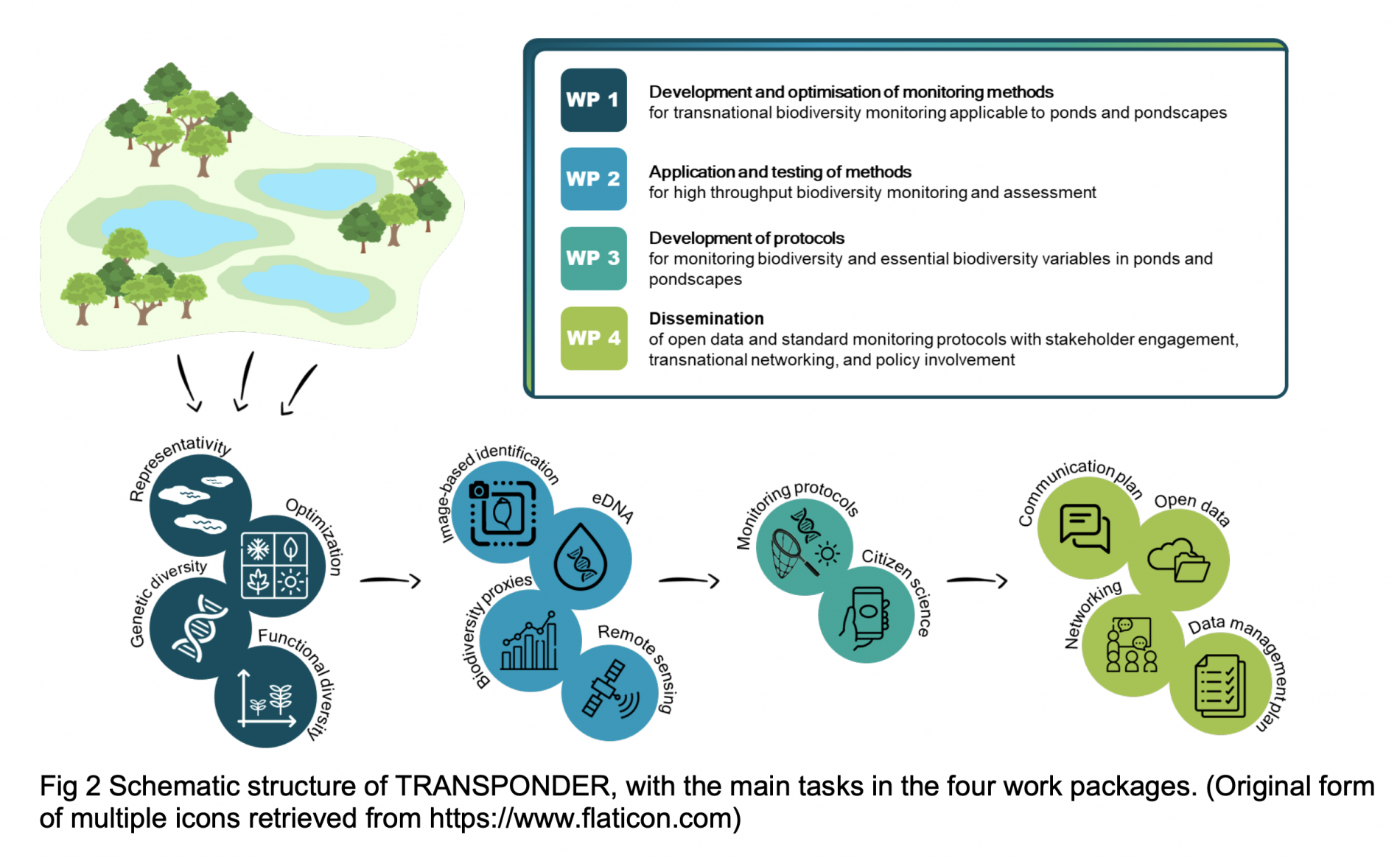TRANSPONDER PROJECT
Last Updated:
- English
- Türkçe
TRANSPONDER: TRANSnational biodiversity and ecosystem assessment approaches for PONDscapes in EuRope
Project number: Biodiversa2022-64
Project acronym: TRANSPONDER
Project title: Transnational biodiversity and ecosystem assessment approaches for pondscapes in Europe
Duration: 36 months
Start date: 2024-02-01
Free keywords : biodiversity, ponds, temporary ponds, hydroperiod, genetic diversity, functional diversity, monitoring
Aims TRANSPONDER (Fig 1) aims to improve our ability to assess biodiversity and ecosystem change in overlooked and valuable ecosystems by optimising tools and developing protocols for biodiversity monitoring in ponds and pondscapes. This involves establishing approaches to select sites for monitoring and evidence- based optimisation, standardisation and automation of the monitoring procedures in a transnational context.

Through continuous engagement with a range of stakeholder groups, TRANSPONDER also aims to create a network for exchanging expertise and sharing expectations, and thus increase the impact of the project.
The project has the following objectives:
Objective 1: Optimization of sampling protocols for monitoring biodiversity patterns and dynamics using existing databases combined with targeted sampling to test protocols across a range of pond types. (WP1)
Objective 2: Develop methods allowing an expansion of the spectrum of biodiversity measures that can be monitored to include functional and genetic diversity in key taxa (zooplankton and macrophytes) so as to capture essential components of population, community and ecosystem resilience. (WP1)
Objective 3: Develop automated methods to increase efficiency and scale of monitoring of ponds and pondscapes across Europe such that large-scale deployment of pond biodiversity monitoring is possible. (WP2).
Objective 4: Synthetize methodological developments in a standardised transnational protocol co-developed with stakeholders to produce a widely applicable assessment methodology for pond biodiversity and ecological status. (WP3)
Objective 5: Develop a simplified version of the monitoring protocol that can be outsourced to civil society to increase engagement and awareness, and to complement standardised monitoring schemes with reduceddepth but high-coverage data. (WP3)
Objective 6: Develop a transnational network of stakeholders that are involved in biodiversity monitoring and policy development linked to monitoring, so as to co-develop monitoring protocols for pond and pondscapes biodiversity. Establish communication channels to increase implementation of monitoring schemes and to exchange knowledge, data and best practices so that, ultimately, TRANSPONDER facilitates policy making. (WP4)
Overall research strategy
TRANSPONDER consists of four work packages (Figure 2) that will be developed in parallel and inform each other. WP1 capitalises on existing data, targeted field work and novel methodological approaches across 7 European countries to (i) develop and optimise a standardised methodology to assess the biodiversity of ponds and (ii) investigate a wider spectrum of biodiversity measures that can be monitored to include functional and genetic diversity in key taxa. WP2 focusses on how enhanced automatisation fostering high-throughput analyses can be integrated into assessments of pond biodiversity. WP3 focuses on the development of generally applicable monitoring protocols that are optimised, based on the data and methodological developments obtained in WP1 and WP2. WP3 additionally will develop simplified versions of monitoring protocols using proxies that can support large-scale and citizen-driven monitoring projects. In WP4 we will engage stakeholders at both the regional and European level, aiming at (i) co-development of monitoring protocols, (ii) raising the profile of ponds and their key role in biodiversity conservation and policy, (iii) stimulating uptake of pond and pondscape biodiversity monitoring schemes and (iv) integrating pond data into key existing platforms.

